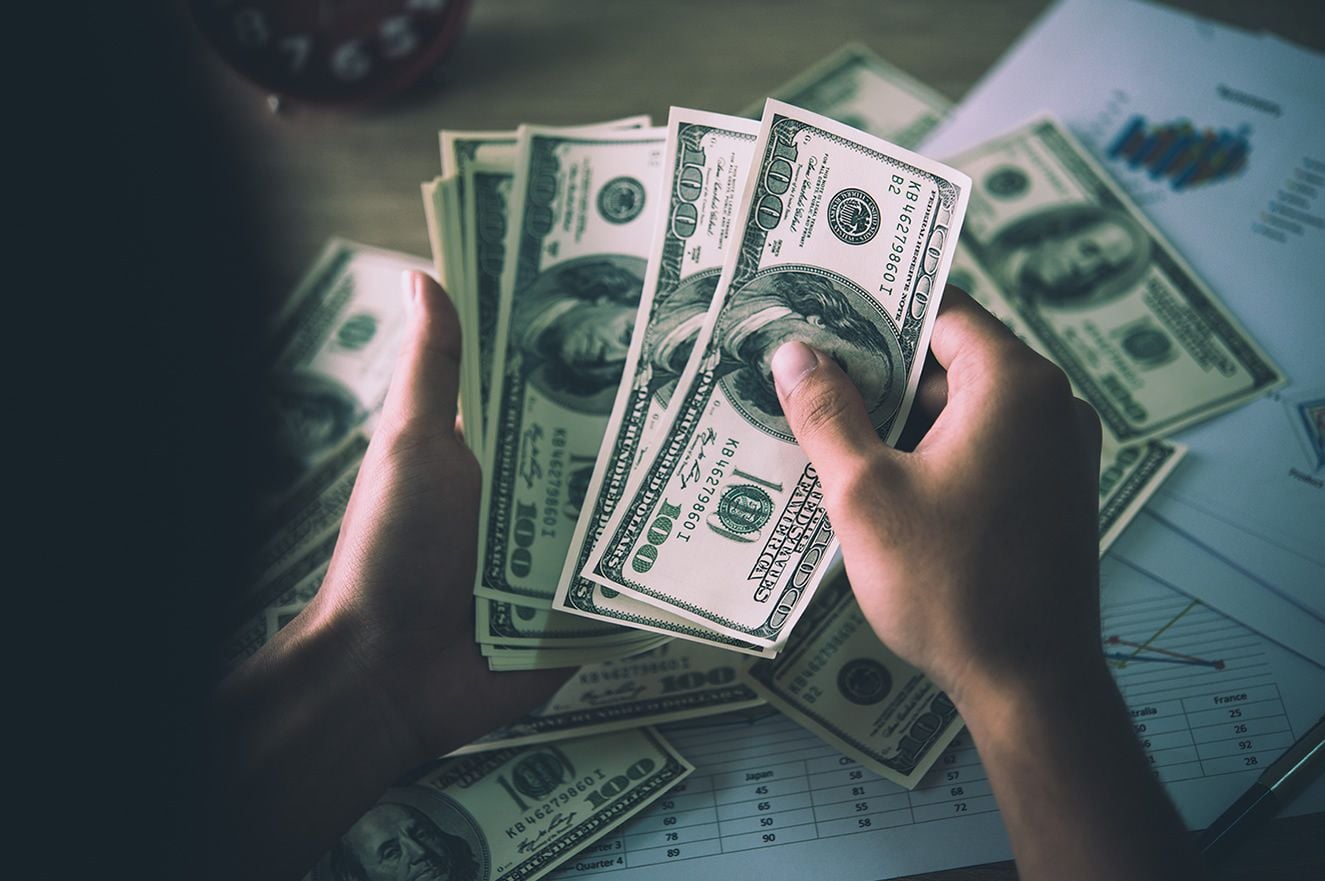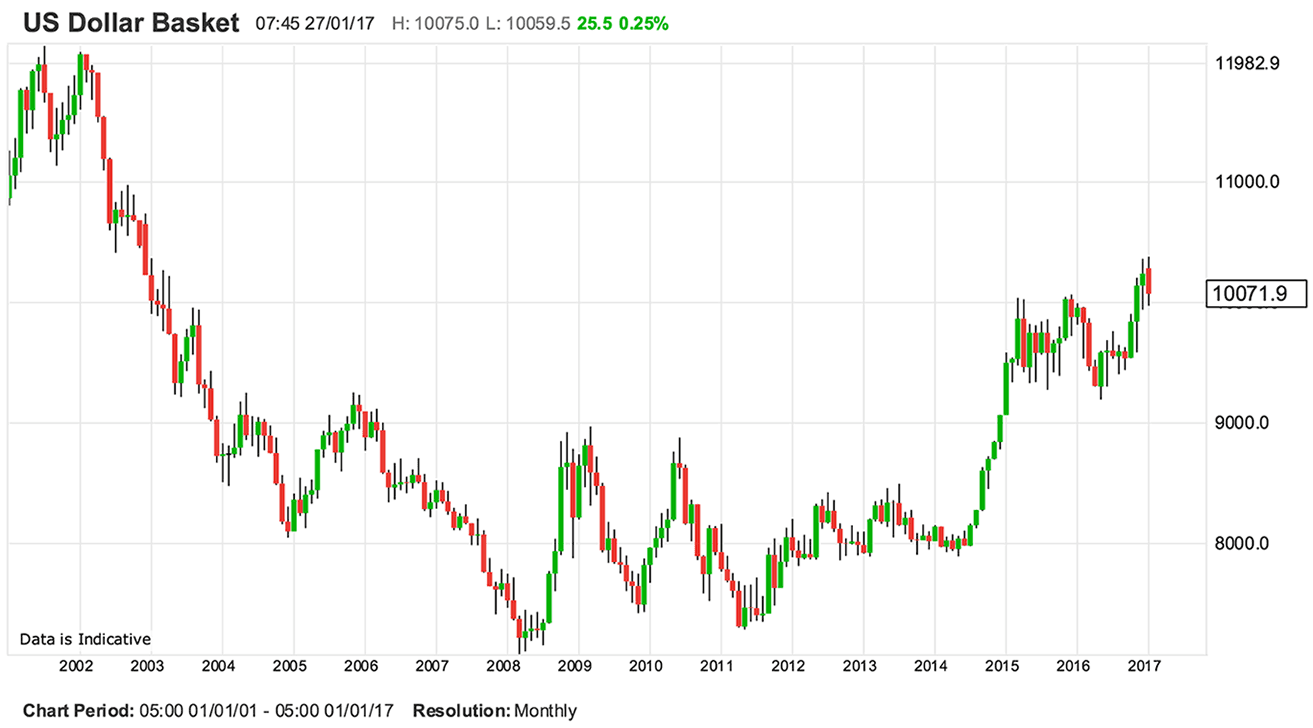This is the US Dollar’s Last Hurrah
- Written by: Gary Howes
-

We are witnessing the final kicks in the US Dollar’s ascendency argue economists at a leading Canadian investment bank.
New research from CIBC Capital Markets suggests that while more strength should be expected over coming weeks there is a time limit on the Dollar's rally.
The Dollar has been steadily rising against its major competitors since since mid 2014 with the US Dollar index - a basket of major USD-based currency pairs - rising from 80 to the +100 levels witnessed in 2017.
However, the rally has stalled of late leading some to question the ability of the US unit to push yet higher.
"Although the US equity market remains buoyant following Donald Trump's inauguration as US president, USD exchange rates have developed a hang-over, with the trade-weighted USD suffering losses since the start of the year. The recovery potential appears limited initially. At least in the near-term, any USD-positive impetus from monetary policy appears unlikely," says Esther Reichelt at Commerzbank.
Yet, there are those that argue the USD is not yet quite done.
We have not seen the Dollar this strong since 2002, and if we note the index went as high as 120 back in 2002 then we could be in for more serious Dollar appreciation if history were to repeat:
More gains are indeed possible says Royce Mendes at CIBC Capital in Toronto.
However, Mendes has a warning:
“The US dollar has one more near-term bout of strength left in it, but after Q1 the currency will underperform. In the absence of aggressive trade restrictions or greater than expected fiscal easing, the greenback will depreciate against a number of majors.”
Something’s Got to Give
The US Dollar took another leap higher on the election victory of Donald Trump as markets bet that increased spending, tax cuts and tax breaks would stimulate the US economy.
The move has since faded and the Dollar has trended sideways through 2017 as markets await more details.
“But the Greenback still has one more bout of strength left in it,” says Mendes. “With the market implying only a 35% chance of a rate hike in March, additional pricing will see the dollar gain against a variety of currencies.”
“However, things could get a little more contentious thereafter. President Trump’s more protectionist stance will face off against his desire for a weaker currency,” says Mendes.
The analyst argues the two are incompatible, and therefore something has to give.
“At this point, it appears that cooler heads will prevail, meaning that the more aggressive rhetoric on trade policy is unlikely to become a reality. Moreover, fiscal policy isn’t shaping up to be a major boon for the economy, with more conservative members of congress likely keeping a lid on deficits,” says Mendes.
With US policy providing less impetus for currency strength, the focus will begin to shift after the first quarter.
“At that time, the country’s wide current account deficit will be seen in more contrast to the surpluses in both the Eurozone and Japan. While, at the same time, monetary stimulus in those jurisdictions will be winding down,” says Mendes.
CIBC say traders should look for the US Dollar’s strength to wane after the first quarter of 2017.
Forecasts for the US Dollar Against the Pound, Euro and Yen
How does CIBC’s expectations for the US Dollar gel with their actual exchange rate forecasts?
The Pound to Dollar exchange rate is forecast to remain under pressure in the first quarter of 2017 - but crucially the base at 1.20 is unlikely to give way.
From here the GBP/USD recovers to 1.22 in the second quarter ahead of a rise to 1.24 in the third quarter and 1.27 by the end of the year. 2018 should see the Pound move above 1.30.
With Sterling quoted at 1.2552 at the time of writing it could therefore be considered as over-priced.
The Euro to Dollar exchange rate is forecast to trade towards 1.04 in the first quarter of 2017 ahead of a rise to 1.07 in the second quarter and 1.10 in the third quarter. The end of the year sees the EUR/USD rising to 1.12 ahead of 1.14 in the first quarter of 2018.
The Dollar to Yen exchange rate is forecast at 116 in the first quarter 2017, 114 in the second quarter and 113 in the third quarter. The Fourth quarter sees 112 ahead of a fall to 110 in the first quarter of 2018.

